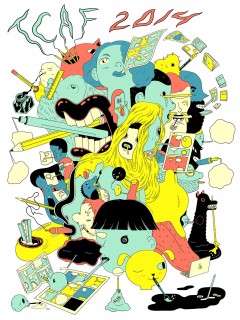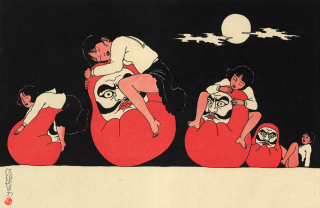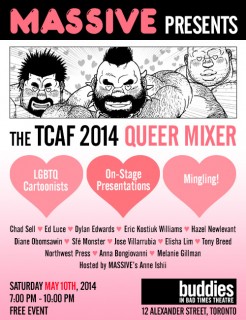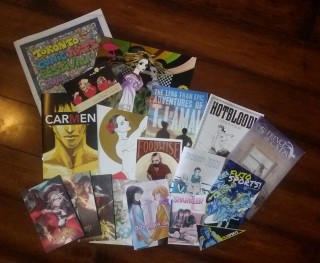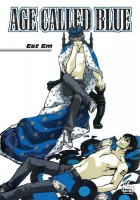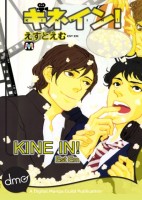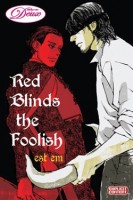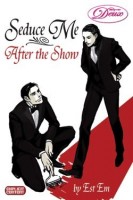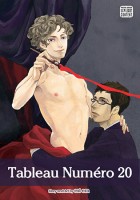On Wednesday, Tokyopop released Peremoha: Victory for Ukraine, an anthology of nine stories written shortly after the first Russian tanks rolled into Ukraine on February 24, 2022. In the forward to Peremoha, Tokyopop publisher Stu Levy explains that these comics “were created entirely by Ukranians to express their fears, tears, and anger towards ‘the Enemy,'” and to express “their resolve and will to fight.” Tokyopop will donate a portion of every book sale to RAZOM, a non-profit organization that is providing humanitarian relief inside Ukraine, evacuating vulnerable populations from war zones, and promoting “policies that strengthen and support Ukraine and its relationship with the US.”
MANGA NEWS
Shueisha is in the process of initiating lawsuits against several pirate websites. [Torrent Freak]
Coming soon to a laptop or television near you: Keseiju: The Grey, a live-action television series based on Hitoshi Hiwaaki’s Parasyte. The series will be directed by Yeon Sang-ho (Train to Busan), with an original script by Yeon and Ryu Yong-jae (Peninsula). No release date has been announced, but the show will stream on Netflix. [Otaku USA]
During her recent trip to Japan, Megan Thee Stallion visited the JoJo: Ripples of Adventure exhibit at the National Art Center in Tokyo. [Yahoo! News]
FEATURES AND PODCASTS
Erica Friedman files a report from Flamecon 2022. [Okazu]
Looking ahead to the holiday season, Brigid Alverson highlights three upcoming manga. [ICv2]
The gang at Honey’s Anime recommend five great manga for bibliophiles. [Honey’s Anime]
This week’s Mangasplaining episode is a veritable feast, as Deb, David, Chip, and Chris compare notes on four different series: Food Wars! Shokugeki no Soma, Sweetness and Lightning, Kokkoku: Moment by Moment, and How Are You? [Mangasplaining]
The Manga Machinations crew take at look at two new releases–Kowloon Generic Romance and Lost Lad London–as well as the under-appreciated Hetereogenia Linguistico. [Manga Machinations]
On the latest Multiversity Manga Club podcast, Walt Richardson, Emily Myers, and Zach Wilkerson recap chapters 901-924 of One Piece. [Multiversity Comics]
Justin and Marcella critique the fifth and final arc of the Sailor Moon manga. [Sailor Manga]
Jocelyne Allen has the skinny on est em’s latest series, Osama no Mimi, in which a mysterious bartender buys secrets from his customers and “distills them into a liquid which he then makes fancy cocktails with.” Yeah, I’d read that… [Brain vs. Book]
REVIEWS
Over at Comics Worth Reading, Johanna Draper Carlson sings the praises of Cat + Gamer. “Between the portrait of a happy, well-adjusted gamer and the charming cat, there’s a lot to enjoy,” she notes. “This is a wonderful read for anyone, particularly for anyone who wants a pet cat but can’t have one. After all, fictional cats are much better behaved.” Megan D. takes Osamu Tezuka’s Bomba! for a test drive, characterizing it as “yet another selection from what I refer to as Tezuka’s edgelord phase, that decade or so where he was determined to outdo the big-name gekiga mangaka of the day by producing an endless stream of grim, complex, edgy, and frequently unsuccessful tales of troubled young men.”
This week, you’ll find short-n-sweet reviews at Beneath the Tangles, Manga Bookshelf, Women Write About Comics, and SOLRAD, where Helen Chazan weighs in on The Men Who Created Gundam, “a comic begging to be harvested for ‘out of context’ posts on social media.”
New and Noteworthy
- Alice in Bishounen Land, Vols. 1-2 (Rebecca Silverman, Anime News Network)
- The Beginning After the End, Vol. 1 (Josh Piedra, The Outerhaven)
- Bomba! (Ian Wolf, Anime UK News)
- Demon Convenience Store, Vol. 1 (Justin, The OASG)
- Fist of the North Star, Vol. 1 (Kate, Reverse Thieves)
- The Girl on the Other Side Siúil, a Rún Deluxe Edition, Vol. 1 (Danica Davidson, Otaku USA)
- Hella Chill Monsters, Vol. 1 (Christopher Ferris, Anime News Network)
- The Holy Grail of Eris, Vol. 1 (Rebecca Silverman, Anime News Network)
- Kowloon Generic Romance, Vol. 1 (Harry, Honey’s Anime)
- My Maid, Miss Kishi, Vol. 1 (Mr. AJCosplay, Anime News Network)
- Nights with a Cat, Vol. 1 (Ian Wolf, Anime UK News)
- She, Her Camera, and Her Seasons, Vol. 1 (Erica Friedman, Okazu)
- Talk to My Back (Terry Hong, Book Dragon)
- Why Raelina Ended Up at the Duke’s Mansion, Vol. 1 (Al, Al’s Manga Blog)
- The Wolf Never Sleeps, Vol. 1 (Kevin T. Rodriguez, The Fandom Post)
- The Wrong Way to Use Healing Magic Is an Isekai That Mixes Comedy and Drama, Vol. 1 (Danica Davidson, Otaku USA)
Ongoing and Complete Series
- Alice in Borderland, Vol. 3 (Kate Sánchez, But Why Tho?)
- Aria the Masterpiece, Vol. 3 (HWR, Anime UK News)
- Attack on Titan, Vol. 3 (SKJAM, SKJAM! Reviews)
- Blue Period, Vols. 3-5 (Helen, The OASG)
- Cherry Magic! Thirty Years of Virginity Can Make You a Wizard?!, Vol. 4 (Johanna Draper Carlson, Comics Worth Reading)
- Dead Dead Demon’s Dededede Destruction, Vol. 11 (Josh Piedra, The Outerhaven)
- Fist of the North Star, Vol. 5 (Grant Jones, Anime News Network)
- Fist of the North Star, Vol. 5 (King Baby Duck, Boston Bastard Brigade)
- I’m the Villainess, So I’m Taming the Final Boss, Vol. 3 (Onosuke, Anime UK News)
- In Another World With My Smart Phone, Vol. 6 (Josh Piedra, The Outerhaven)
- Kaiju No. 8, Vol. 3 (Kate Sánchez, But Why Tho?)
- Kenka Ramen (Krystallina, Daiyamanga)
- The King’s Beast, Vol. 7 (Kate Sánchez, But Why Tho?)
- The Kurosagi Corpse Delivery Service Omnibus, Vol. 5 (Johanna Draper Carlso, Comics Worth Reading)
- Record of Ragnarok, Vol. 3 (Kate Sánchez, But Why Tho?)
- Snow White With the Red Hair, Vols. 18-19 (Demelza, Anime UK News)
- Voices of a Distant Star (Sakura Eries, The Fandom Post)
